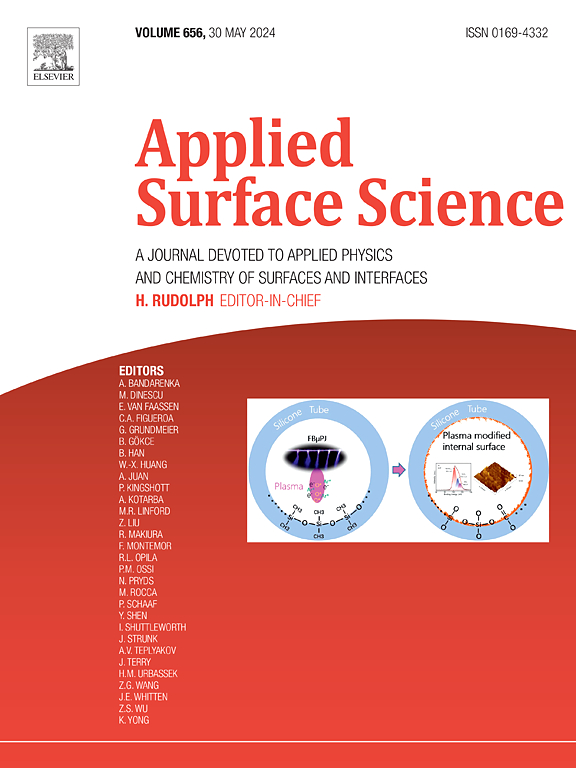Twins and dark features in MPCVD diamond films
IF 6.3
2区 材料科学
Q2 CHEMISTRY, PHYSICAL
引用次数: 0
Abstract
In this study, diamond films were prepared by Microwave Plasma Chemical Vapor Deposition (MPCVD). The twins, dark features, pores, and their surface relationships were investigated, with a focus on the crystallographic transition within fivefold twins, the growth characteristics of distinct film regions and dark features, and the mechanisms of pore formation. The samples were characterized using SEM, XRD, Raman spectroscopy, EBSD, Optical microscopy, and Laser confocal microscopy, complemented by first-principles calculations and molecular dynamics simulations.
It is demonstrated that Σ3 twins, fivefold twins, and parallel twins all constitute Σ3 twin boundaries, among other types of twin boundaries, and ∑3 twins, fivefold twins and parallel twins are contact twins. It is revealed that the transformation of the crystal planes is due to energy fluctuations, and the results show that the dark features are mainly composed of growth pores, and the regions with more dark features are often accompanied by a greater number of pores. In addition, it is revealed that the growth pores are mainly formed under the influence of twins, which may lead to different growth rates of crystal planes and atomic misalignment, both of which may promote the formation of growth pores, but the first formation mechanism is predominant.


MPCVD金刚石薄膜中的双胞胎和黑暗特征
本研究采用微波等离子体化学气相沉积(MPCVD)法制备了金刚石薄膜。对孪晶、暗特征、孔隙及其表面关系进行了研究,重点研究了五重孪晶的晶体学转变、不同膜区和暗特征的生长特征以及孔隙形成机制。利用SEM、XRD、拉曼光谱、EBSD、光学显微镜和激光共聚焦显微镜对样品进行了表征,并辅以第一性原理计算和分子动力学模拟。在其他类型的双胞胎边界中,Σ3双胞胎、五重双胞胎和平行双胞胎均构成Σ3双胞胎边界,∑3双胞胎、五重双胞胎和平行双胞胎均为接触双胞胎。结果表明,晶体平面的转变是由于能量波动引起的,暗特征主要由生长孔组成,暗特征较多的区域往往伴随着较多的孔隙。此外,还发现生长孔主要是在孪晶的影响下形成的,孪晶可能导致晶面的不同生长速率和原子的错位,两者都可能促进生长孔的形成,但第一种形成机制占主导地位。
本文章由计算机程序翻译,如有差异,请以英文原文为准。
求助全文
约1分钟内获得全文
求助全文
来源期刊

Applied Surface Science
工程技术-材料科学:膜
CiteScore
12.50
自引率
7.50%
发文量
3393
审稿时长
67 days
期刊介绍:
Applied Surface Science covers topics contributing to a better understanding of surfaces, interfaces, nanostructures and their applications. The journal is concerned with scientific research on the atomic and molecular level of material properties determined with specific surface analytical techniques and/or computational methods, as well as the processing of such structures.
 求助内容:
求助内容: 应助结果提醒方式:
应助结果提醒方式:


